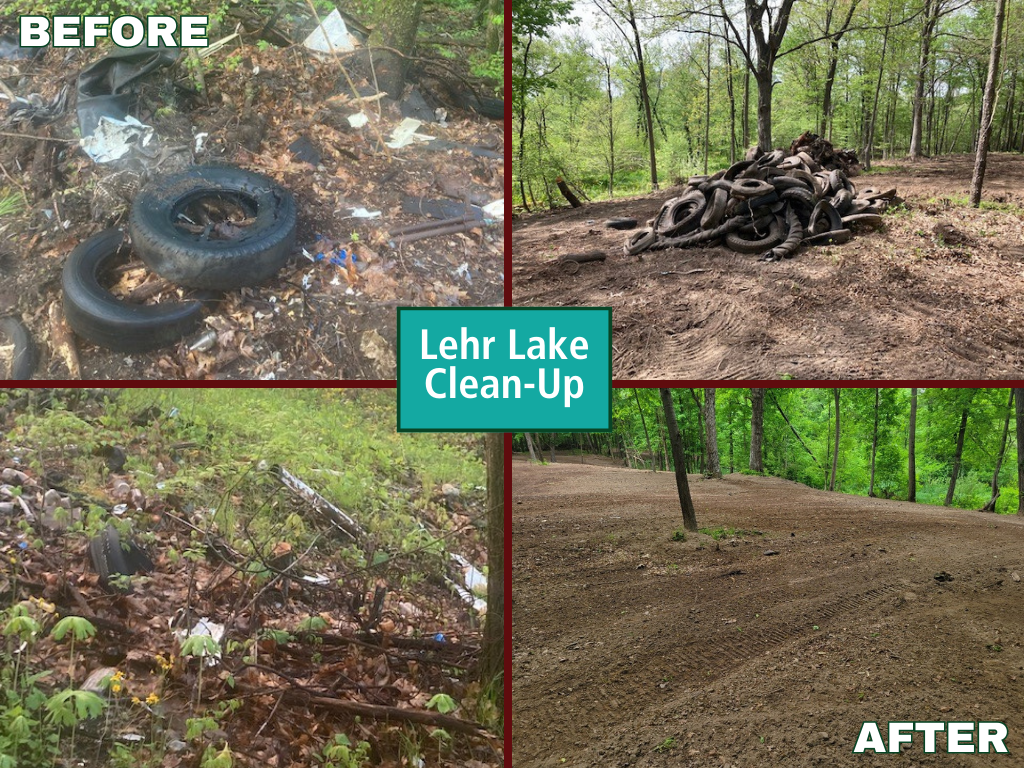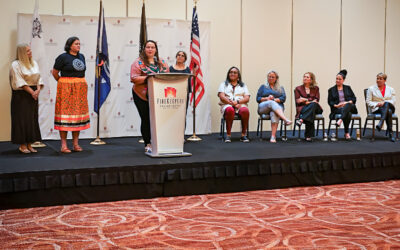Parcels Could be Restorative for Traditional Lifeways
Several years ago, NHBP purchased a number of parcels through a foreclosure auction, which amounted to approximately 400 acres with frontage on Sherwood Township’s Lehr Lake in Branch County, Michigan.
The properties have a variety of land cover, including forested, agriculture, gravel extraction, a pond and even wetlands.
However, one of the wetlands on the north side of Lehr Lake was historically used as an unregulated dump, or gravel pit, for Sherwood Township residents and enterprises.
“We estimated there were about 2,000 to 3,000 tires on this property, inside this gravel pit,” said NHBP Environmental Director John Rodwan. “People dumped into this pit for decades.”
Since acquiring the parcels associated with Lehr Lake, NHBP’s Environmental Department has sought to remove the tires for proper disposal.
In 2017, Phase 1 of the clean-up began with the help of a local contractor, who removed approximately 200 tires, which was a great start. Despite these clean-up efforts, thousands of tires remained, many of which were buried and difficult to remove without even heavier equipment.
After this setback, the Environmental Department noted a Grant Solicitation from the Indian Health Services (IHS) that would fund the clean-up of tire dumps since they pose a health risk, as the tires in the ground are a “contributing factor of encephalitis,” according to Rodwan.
Thankfully, NHBP Housing Department Director Ben Tenney was able to provide his expertise in IHS grants, securing a $55,000 grant for the complete removal of the remaining tires and other improperly disposed items from the Lehr Lake parcels.

Due to COVID-19 restrictions, the project was paused for two years but was re-engaged in the spring of 2022.
Under the Housing Department’s expert oversight with the contractor, Phase 2 of the clean-up commenced, bringing heavy equipment to the site.
Within just a week’s time, remarkably, the tires and associated debris were removed in April 2022, and the site was restored to its natural condition.
As a bonus, the access road was improved, thereby providing Tribal Members with enhanced access to the natural resources on this parcel of land.
“To have purchased so much undisturbed land for NHBP, after the clean-up, this land is of even higher value for the Tribe,” said Rodwan. “This site could be restorative for traditional lifeways, including hunting, gathering, fishing, as well as spiritual needs.”
Following the tradition of planning seven generations ahead, this project is merely one example of how NHBP continues to be environmental stewards, focusing on enhancing the value of environmental and sustainability efforts to benefit our Community.




0 Comments